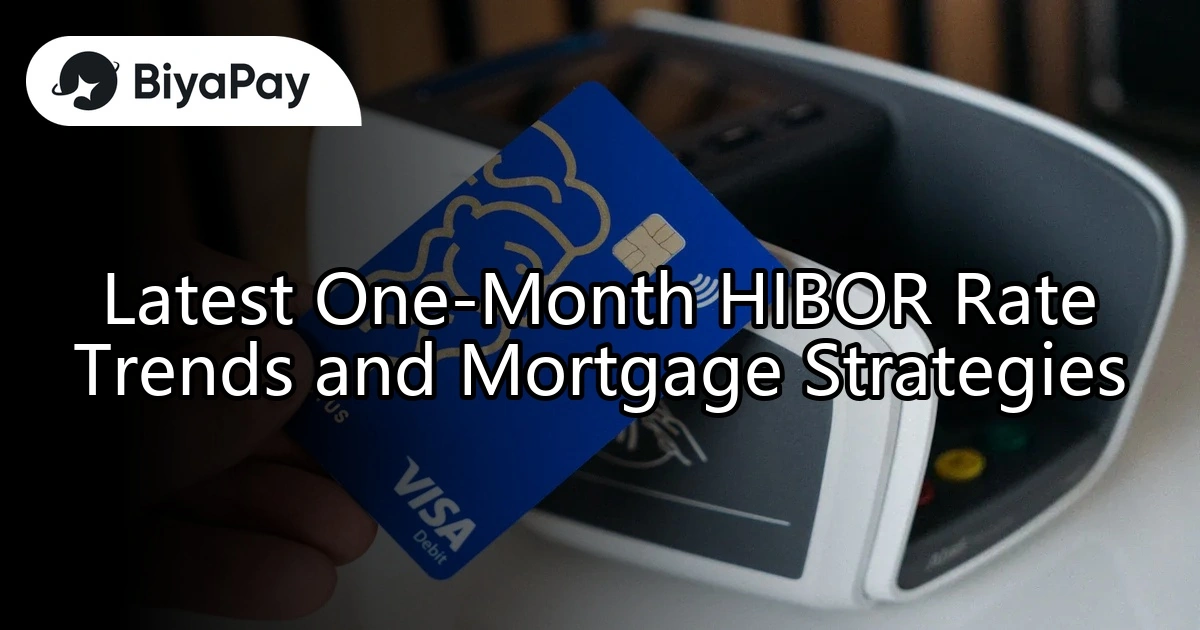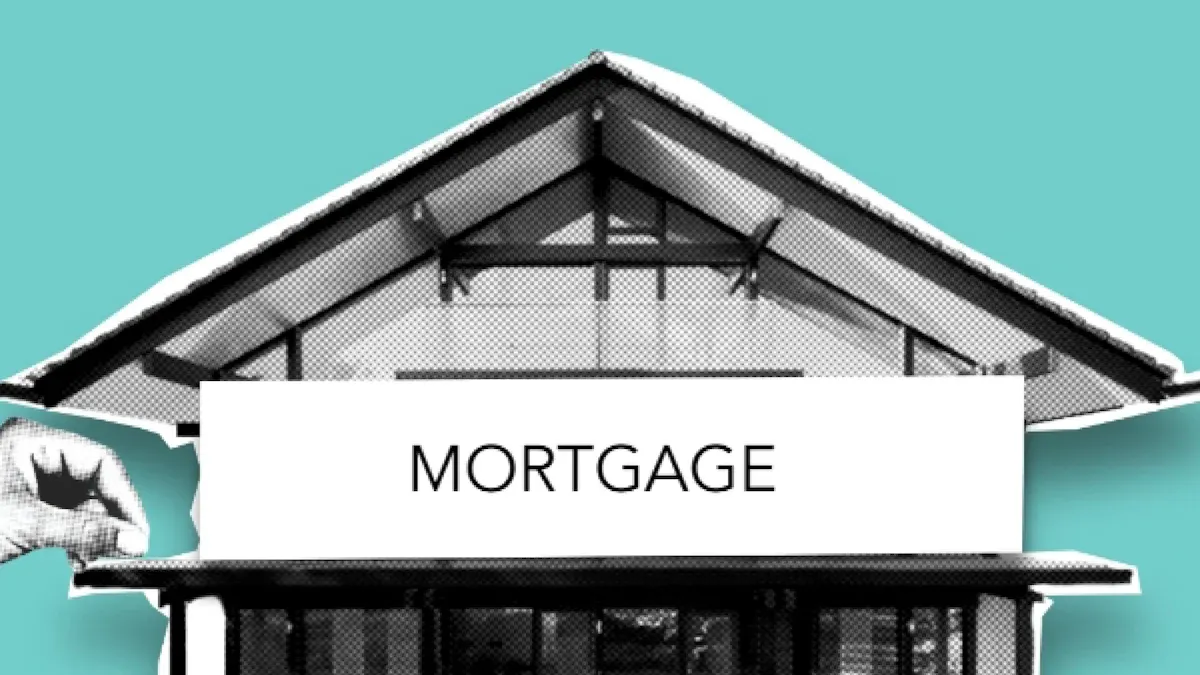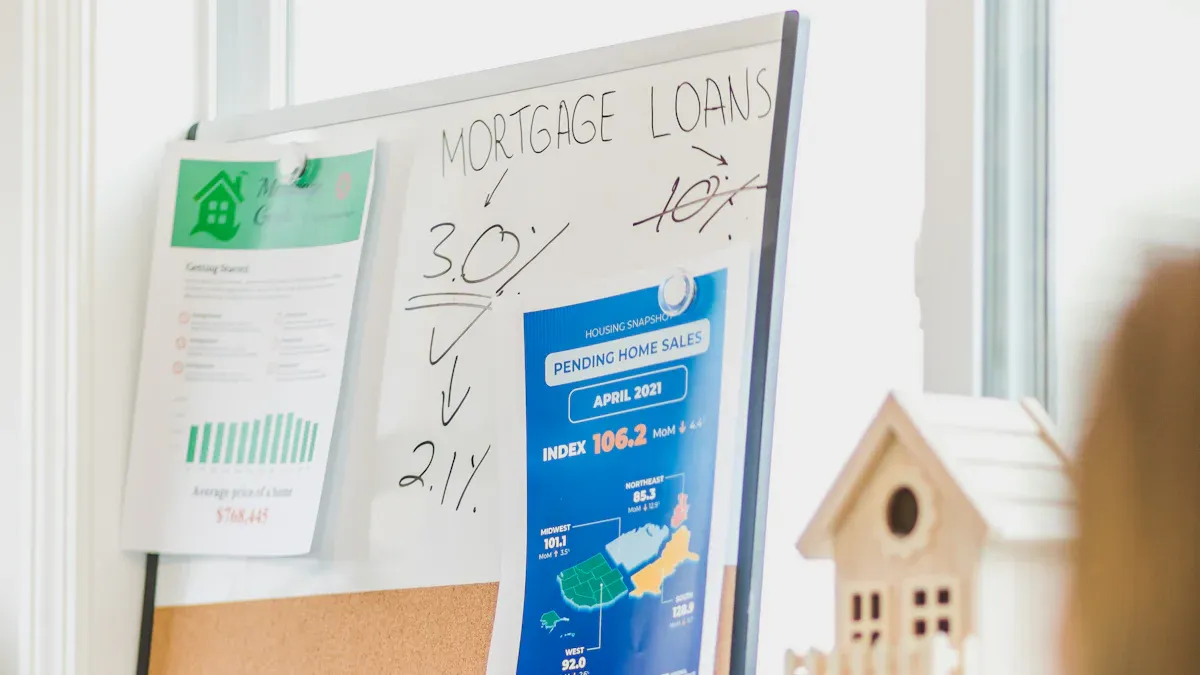- EasyCard
- Trade
- Help
- Announcement
- Academy
- SWIFT Code
- Iban Number
- Referral
- Customer Service
- Blog
- Creator
Latest One-Month HIBOR Rate Trends and Mortgage Strategies

Image Source: unsplash
In June 2025, the one-month HIBOR was reported at 0.62%, falling for multiple consecutive days and hitting a new low since 2022. Market insiders pointed out that the liquidity in Hong Kong’s banking system has significantly increased, with abundant funds causing the one-month HIBOR to drop sharply. This rapid decline has immediately alleviated the repayment pressure for mortgagors.
Key Points
- In June 2025, the one-month HIBOR fell to 0.62%, a new low since 2022, reflecting abundant liquidity in Hong Kong’s banking system.
- The sharp drop in HIBOR has significantly reduced the repayment pressure for HIBOR-based mortgages (H-mortgages), allowing existing mortgagors to enjoy lower interest rates and a lighter repayment burden.
- New mortgage applicants can choose between H-mortgages or Prime-based mortgages (P-mortgages) based on their risk tolerance, with H-mortgages offering lower but more volatile rates, and P-mortgages providing more stable rates.
- Mortgagors should closely monitor market interest rate changes, consider refinancing at the right time to reduce repayment pressure, and maintain communication with banks to flexibly adjust strategies.
- The market environment remains challenging, and mortgagors are advised to manage risks effectively, maintain sufficient cash flow, and flexibly respond to future interest rate fluctuations.
Latest One-Month HIBOR Trends

Image Source: pexels
Latest Rate Figures
In June 2025, the one-month HIBOR was reported at 0.62%. This figure has been declining for multiple consecutive days and has reached a new low since 2022. According to data released by the Hong Kong Interbank Association, the one-month HIBOR reached 0.59810% at the beginning of June, reflecting extremely abundant market liquidity.
Experts noted that this interest rate level is significantly lower than the same period last year, indicating a substantial improvement in liquidity in Hong Kong’s banking system.
The table below summarizes the key one-month HIBOR figures for June 2025:
| Date | One-Month HIBOR Rate |
|---|---|
| 2025-06-01 | 0.59810% |
| 2025-06-10 | 0.61% |
| 2025-06-20 | 0.62% |
Recent Decline
From May to June 2025, the one-month HIBOR experienced a rapid decline. In early May, HIBOR peaked at 4%, but within a few weeks, it fell to below 1%. This downward trend was driven by the following factors:
- The Hong Kong Monetary Authority (HKMA) enhanced liquidity management, injecting more funds into the banking system.
- The U.S. Federal Reserve maintained stable interest rates, reducing capital outflow pressure.
- Capital inflows from mainland China to Hong Kong increased the local banks’ fund supply.
The sharp drop in the one-month HIBOR has immediately reduced mortgage repayment pressure. The market generally expects HIBOR to remain low in the short term, allowing mortgagors to temporarily benefit from a low-interest environment.
Trend Analysis
Major Changes
Over the past year, the one-month HIBOR has experienced significant fluctuations. In the second half of 2024, rates remained between 3% and 4%. In May 2025, the market saw dramatic changes. On May 7, the one-month HIBOR was reported at 3.10%. Just one week later, by May 15, it had fallen to 1.32%. By May 22, it plummeted further to 0.65%. This rapid decline reflects abundant liquidity in Hong Kong’s banking system and a significant increase in market liquidity.
Reports also include charts showing asset allocation and interest rate changes, helping readers understand the one-month HIBOR trends. The charts show a clear downward trend in HIBOR from early May to June, in stark contrast to the rate-hiking cycle of 2022–2023.
Influencing Factors
Several factors have collectively driven the sharp drop in HIBOR, with the HKMA’s policies and changes in market liquidity being the most critical:
- The HKMA purchased USD 17 billion in May (approximately HKD 132.6 billion, based on an exchange rate of 1 USD to 7.8 HKD), while selling HKD 129.4 billion, directly increasing the market’s USD supply.
- The banking system’s balance surged from HKD 44.6 billion to HKD 174 billion, a new high since July 2022, indicating extremely abundant funds.
- The spread between HIBOR and SOFR widened to over 350 basis points, far exceeding the 250-basis-point peak during the 2022–2023 rate-hiking cycle.
- The loan-to-deposit ratio for HKD dropped to 72.3% in April, a decades-low, reflecting significantly reduced funding pressure on banks.
- In May, southbound Stock Connect inflows were only USD 5.8 billion, significantly lower than the average of USD 20 billion in the previous four months, indicating a more conservative capital flow.
These data show that the HKMA’s proactive operations and improved market liquidity are the main reasons for the sharp drop in the one-month HIBOR. With abundant funds in the banking system, the likelihood of HIBOR remaining low in the short term is high.
Mortgage Impact

Image Source: pexels
H-Mortgage Repayments
Following the sharp drop in HIBOR, the repayment pressure for HIBOR-based mortgages (H-mortgages) offered by Hong Kong banks has significantly eased. Currently, the actual interest rate for H-mortgages is around 3.39%, far below the cap rates set by most banks. This change has led to a reduction in monthly repayment amounts for many mortgagors, with existing mortgage clients benefiting immediately.
The Hong Kong Interbank Offered Rate (HIBOR) has dropped to near zero, with the spread against USD rates widening to a historical high, leading to a rebound in the USD/HKD exchange rate and capital outflows, further exacerbating weak credit demand. The HKD loan-to-deposit ratio has fallen to a multi-year low, reflecting reduced lending appetite among banks. Although there are signs of a recovery in short-term real estate sales following the HIBOR plunge, weak demand from mainland China and uncertainties in international trade continue to pose challenges to the overall economic cycle, indicating that HIBOR fluctuations have a significant impact on the mortgage market.
The reduced pressure on H-mortgage repayments has eased short-term cash flow burdens for existing mortgagors. Some banks, due to lower funding costs, have also increased their willingness to approve mortgage loans. According to the latest data, the total outstanding mortgage loans of commercial banks reached approximately USD 2.2 trillion, with a delinquency rate of only 0.39%, indicating low mortgage loan risks and sustained lending momentum among banks.
P-Mortgage Comparison
Compared to H-mortgages, Prime-based mortgages (P-mortgages) are currently less attractive. P-mortgage rates are influenced by banks’ Prime Rates, which have not seen significant reductions recently. The actual interest rate for most banks’ P-mortgages remains at 4% or higher, significantly above the current H-mortgage rates.
| Mortgage Type | Actual Interest Rate (June 2025) | Repayment Pressure | Suitable For |
|---|---|---|---|
| H-Mortgage | Approx. 3.39% | Lower | Existing and new applicants |
| P-Mortgage | Approx. 4.00% or higher | Higher | Those with higher risk tolerance |
-
H-Mortgage Advantages:
- Rates fluctuate with the market, currently benefiting from the sharp HIBOR drop, significantly reducing repayment pressure.
- Actual interest rates are below the cap, saving interest expenses in the short term.
-
P-Mortgage Advantages:
- Rates are more stable, suitable for clients who prefer to avoid repayment fluctuations caused by interest rate changes.
- Suitable for applicants concerned about potential HIBOR rebounds in the future.
Existing H-mortgage clients can continue to enjoy the low-interest environment and do not need to refinance in the short term. New applicants can choose between H-mortgages and P-mortgages based on their risk tolerance. Although there are signs of recovery in short-term real estate sales, the overall economic cycle remains challenging, and banks need to cautiously adjust lending policies. Applicants are advised to closely monitor market trends and their financial situation to make appropriate arrangements.
Strategy Recommendations
Refinancing Timing
Existing mortgagors should closely monitor market interest rate trends. With the recent sharp drop in the one-month HIBOR and abundant liquidity in Hong Kong’s banking system, the likelihood of rates remaining low in the short term is high. If current repayment rates are significantly higher than market levels, refinancing to an H-mortgage product can immediately reduce repayment pressure.
Professional reports indicate that recent adjustments to real estate credit policies, including lowering down payment ratios, removing lower limits on loan rates, and reducing provident fund loan rates, have helped increase banks’ lending appetite. These measures provide more refinancing options for existing mortgagors.
Some clients may consider locking in low rates, but they should remain mindful of future market changes. If the HKMA absorbs excess liquidity through issuing Exchange Fund Bills or if the Federal Reserve shifts its policies, HIBOR may rise. Mortgagors are advised to regularly review mortgage terms, maintain communication with banks, and flexibly adjust strategies.
New Application Strategies
New mortgage applicants should choose based on their risk tolerance and market expectations. H-mortgages currently offer lower actual interest rates and lower short-term repayment pressure, making them suitable for clients seeking low rates. P-mortgages, with more stable rates, are suitable for those sensitive to interest rate fluctuations.
- Analysis from professional institutions like CITIC Securities shows that recent policy adjustments, including establishing a USD 300 billion affordable housing re-lending program, have driven USD 500 billion in bank loans, indicating abundant bank funding.
- The HKMA’s total balance surged from USD 44.6 billion to USD 174 billion, significantly increasing market liquidity and pushing the one-month HIBOR to near zero.
- The Federal Reserve is expected to cut rates by about 60 basis points starting in September, with the USD/HKD exchange rate potentially testing the 7.85 level, further impacting HIBOR trends.
Applicants can consider choosing H-mortgages to enjoy short-term low rates while maintaining flexibility to refinance or lock in rates later.
Risk Management
The market environment is constantly changing, and mortgagors need to strengthen risk management.
- Factors such as interest rate arbitrage activities, USD/HKD exchange rate fluctuations, slowing stock market inflows, and IPO demand may impact HIBOR and repayment costs.
- Although real estate sales have shown initial signs of recovery, weak demand from mainland China and uncertainties in U.S. trade policies continue to pose challenges to the economic cycle.
- Conditions for HIBOR normalization, including the HKMA absorbing excess liquidity and changes in external capital flows, require close attention.
Mortgagors are advised to regularly review their financial situation, maintain sufficient cash flow, and communicate with banks to flexibly adjust mortgage products.
The one-month HIBOR may remain low in the near term, but fluctuations could arise due to external policy or capital flow changes. Mortgagors should stay vigilant and prepare early response measures.
The recent one-month HIBOR drop to its lowest since 2022, with the one-month interbank rate at approximately 0.77%, has reduced actual mortgage rates to 1.84%–2.07%. The repayment burden for Hong Kong bank mortgages has significantly eased, and residential market transaction volumes have rebounded. Experts predict a 5% decline in property prices this year, with a potential 3% recovery next year. Office vacancy rates are rising, and rents may fall by 10%. Mortgagors are advised to continue monitoring market trends and flexibly adjust mortgage strategies.
FAQ
What is HIBOR?
HIBOR, or the Hong Kong Interbank Offered Rate, represents the interest rate for short-term borrowing between Hong Kong banks. This rate affects mortgage loan interest.
What is the difference between H-mortgages and P-mortgages?
H-mortgages are based on HIBOR, with rates fluctuating with the market. P-mortgages are based on the Prime Rate, offering more stable rates.
How does the sharp drop in HIBOR affect mortgagors?
A drop in HIBOR reduces interest payments for H-mortgages. Mortgagors’ monthly repayment pressure decreases, providing more cash flow flexibility.
What should be considered when refinancing?
Applicants should compare actual interest rates, handling fees, and cash rebates from different banks. Regularly reviewing mortgage terms and selecting the most suitable option is recommended.
Will HIBOR remain low in the future?
Experts believe HIBOR is likely to remain low in the short term. However, if market liquidity or policies change, HIBOR may rise.
The drop of one-month HIBOR to 0.62% offers mortgage borrowers a low-rate window, yet tracking rates and refinancing costs can be daunting. BiyaPay delivers a seamless digital finance solution—start now at BiyaPay! With transfer fees as low as 0.5%, it minimizes refinancing and fund management costs, while real-time exchange rate queries simplify USD-HKD tracking without tedious HIBOR monitoring. Supporting multiple fiat and digital currency conversions, its 5.48% annualized yield wealth product ensures flexible withdrawals to counter rate rebounds.
Regulated internationally, it guarantees secure transactions. Visit BiyaPay today to seize low-rate mortgage opportunities!
*This article is provided for general information purposes and does not constitute legal, tax or other professional advice from BiyaPay or its subsidiaries and its affiliates, and it is not intended as a substitute for obtaining advice from a financial advisor or any other professional.
We make no representations, warranties or warranties, express or implied, as to the accuracy, completeness or timeliness of the contents of this publication.




Contact Us
Company and Team
BiyaPay Products
Customer Services
is a broker-dealer registered with the U.S. Securities and Exchange Commission (SEC) (No.: 802-127417), member of the Financial Industry Regulatory Authority (FINRA) (CRD: 325027), member of the Securities Investor Protection Corporation (SIPC), and regulated by FINRA and SEC.
registered with the US Financial Crimes Enforcement Network (FinCEN), as a Money Services Business (MSB), registration number: 31000218637349, and regulated by FinCEN.
registered as Financial Service Provider (FSP number: FSP1007221) in New Zealand, and is a member of the Financial Dispute Resolution Scheme, a New Zealand independent dispute resolution service provider.



















